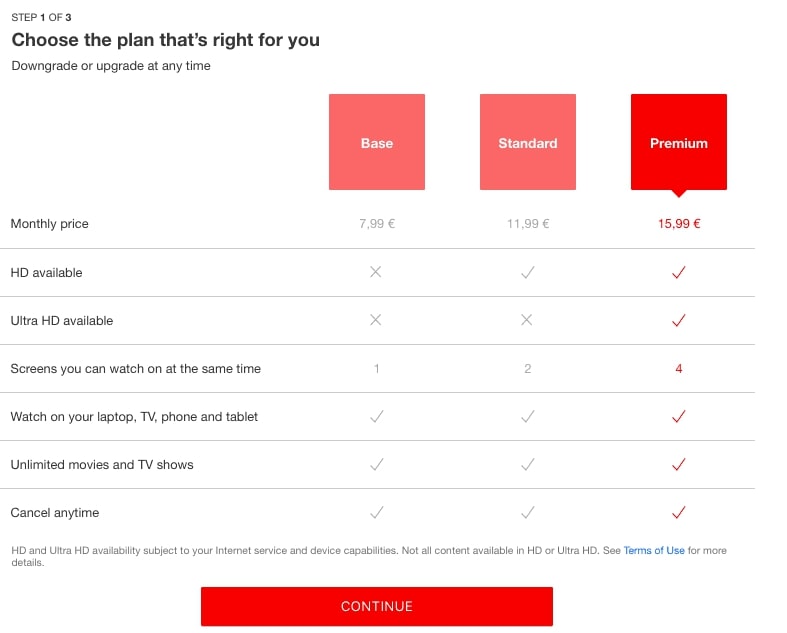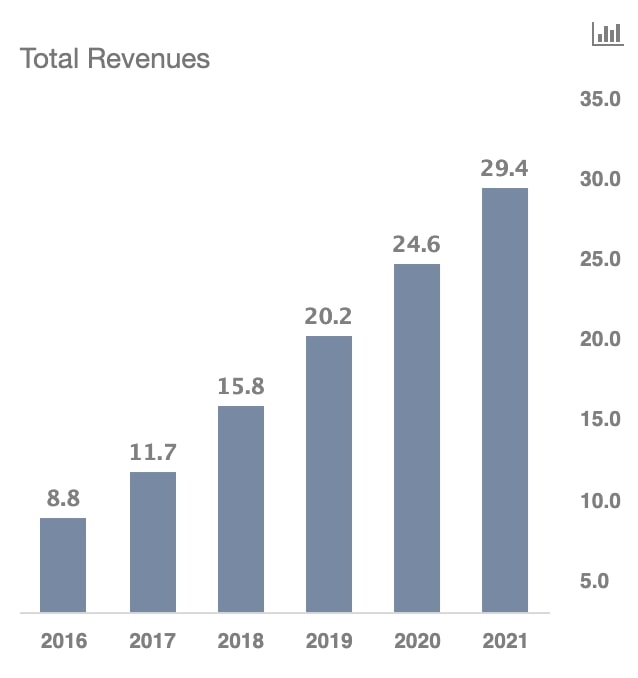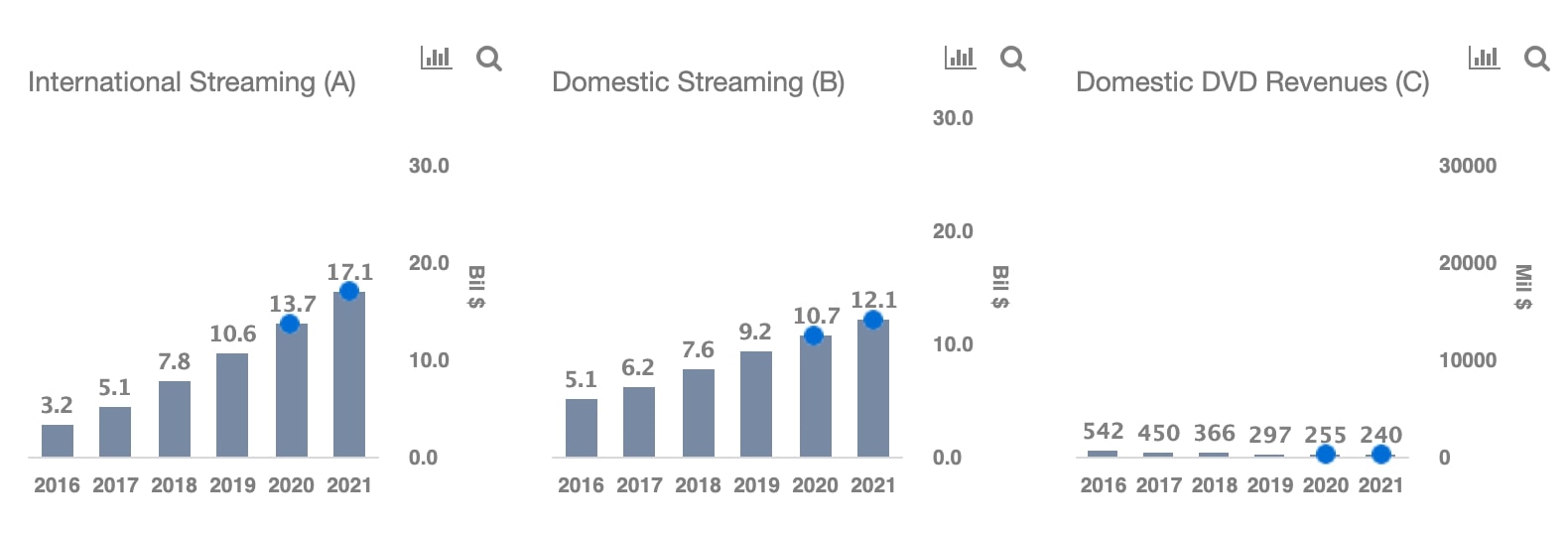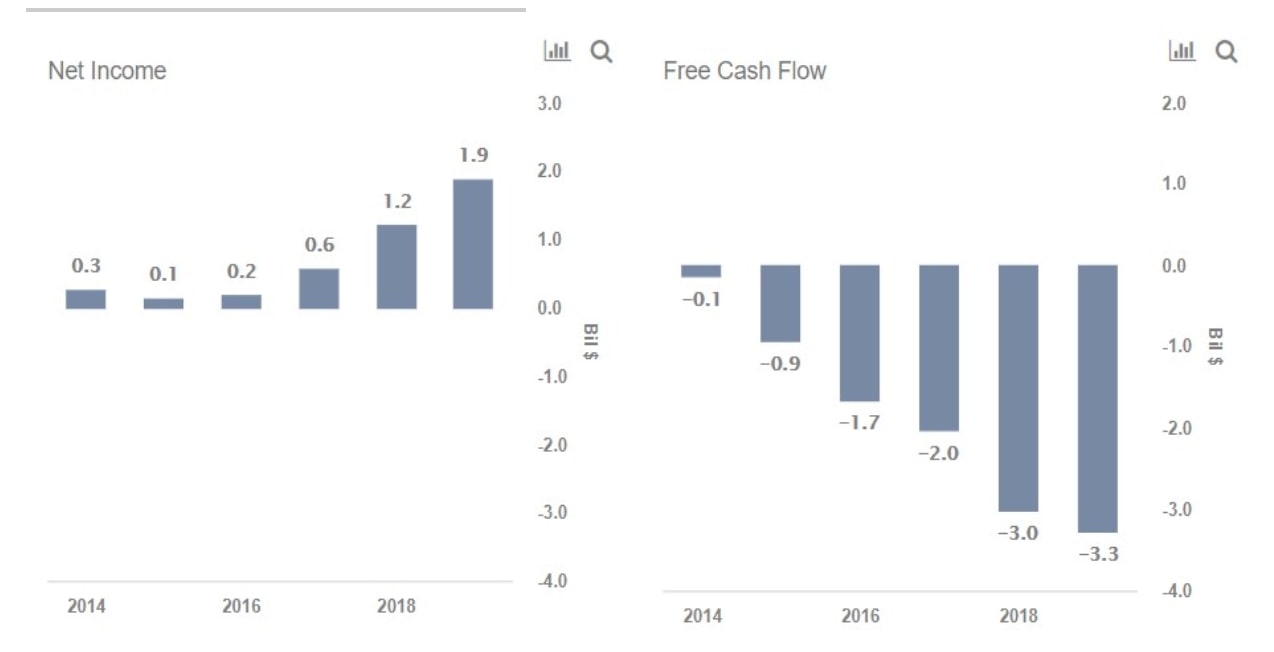Netflix Business Model 2021: Is Netflix's business model sustainable?
Indeed no one is unfamiliar with Netflix - the US video streaming platform. Starting as a DVD rental provider, Netflix now, with global coverage, has more subscribers than all other streaming services combined.
Behind that success is the change in the business model of Netflix. This article will help you partially explain and understand more about this amazing growth.
An introduction to Netflix
Netflix, Inc. has become one of the most successful entertainment companies of all time. Netflix, Inc. was originally established in 1998 by providing services to customers by sending physical copies of movies, programs, video games, and other communication forms through a standard emailing system.
Through rapid changes in technology, Netflix shifted its business model and grew exponentially. They have gone from physical releases to letting customers stream their favorite content anywhere and anytime.
Today, the platform has evolved streaming technologies that have enhanced and improved Netflix’s overall business structure and revenue. This platform provides viewers with the ability to stream and watch a various TV shows, movies, documentaries, and more, through means of using a software application.
Since Netflix changed its proposition to streaming, it has become the world’s seventh-largest internet company by revenue on a global scale. The following is an overview covering the specifications of Netflix’s business canvas model and its core operations.
Read more:
- 4 Best Success Ecommerce Business Models
- What is a SaaS Business Model?
- 15 Key SaaS Metrics that every Business should care about
- How to Value a Small Business?
Quick facts & statistics about Netflix

- The company started renting out DVD’s by mail in 1998.
- Netflix reached 4 million subscribers in 2005.
- In 2007, Netflix launched online video streaming.
- Netflix appeared on the PS3 and smart TVs in 2009
- In 2013, Netflix released its first three original series, House of Cards, Hemlock Grove, and Orange is the New Black.
- As of 2016, Netflix was available worldwide except for a select few countries.
- In 2017, Netflix won its first Oscar for The White Helmets won in the Best Documentary Short Subject category.
- In 2018, Netflix officially beat HBO’s 17-year-long run in Emmy nominations.
- The revenue of Netflix in 2019 exceeded over $20B.
- In the second quarter of 2020, Netflix gained total revenue of over 6.14 billion U.S. dollars, increasing over 13% in the corresponding quarter of 2019, promising another successful year for Netflix.
The business model of Netflix: From renting DVDs to a subscription model
Netflix’s initial business model
Netflix’s first operating model was to let customers rent a video by selecting it online, then shipping it directly to their address by post. And in 1998, Netflix started renting out DVDs.
In the US, the company offers a flat monthly fee for DVD rental services. A subscriber creates a list to rent movies. Films are distributed exclusively through the US Postal Service from regional repositories. Subscribers can keep rented discs as long as they want, but there is a limit to the number of discs each subscriber can have simultaneously. To rent a new disc, the enrollee must return the previous disc through a replying envelope. When received, Netflix sends the next available disc in the subscriber’s rental list.
From renting DVDs to a subscription model
A year later, Netflix switched from renting DVDs to online subscriptions and paid monthly. This move has created a lot of convenience for customers, completely reduced fees incurred, and streamlined management and operation of the business.
Since launching the monthly subscription model in 1999, Netflix has reached 239,000 subscribers in its first year and quickly hit 1 million subscribers in 2003. Netflix currently generates about $ 15 billion annually, with 125 million paid members from more than 190 countries.
The exponential growth of Netflix can be attributed to these key trends:
- Technology: available in many platforms, websites, TV app, mobile app.
- Comfort: being able to watch their favorite shows at their most convenience
- Subscription: simple structure and low monthly cost;
- Data-driven: used for creating recommendations fitting personal preferences.
How does Netflix business model work?
Netflix has three simple types of subscriptions:

- Basic package with a fee is 7,99 €/month, cannot watch HD quality, cannot watch multiple devices at the same time.
- Standard package with a fee is 11,99 € month, watching HD quality, and watching two devices at the same time.
- Premium package with a fee of 15,99 €/month, watching HD and Ultra HD quality, can be viewed on 4 devices at the same time.
With these 3 kinds of subscriptions, you can get access to all types of TV shows and movies worldwide.
In addition, Netflix has 3 business segments:
- International streaming: revenues from monthly membership fees for services related to streaming content to members outside the U.S in 190 countries.
- Domestic streaming: revenues from monthly membership fees for services related to streaming contents to members in the U.S
- Domestic DVD: revenues from monthly membership fees for services consisting solely of DVD-by-mail.


Netflix’s Total Revenue has increased 78% from $8.8 billion in 2016 to $15.8 billion in 2018 and is expected to grow around 50% to $23.2 billion in just 2 years.


Revenue growth of about $9.2 billion over two years to be driven by contribution of about $6.5 billion from the (1) International Streaming segment, and about $2.9 billion from the (2) Domestic streaming segment, partially offset by lower DVD revenues.
(A) Revenue from International Streaming to increase over 50% (about $6.4 billion) in the next two years

Netflix continues to attract more and more international subscribers, though there is growth in monthly fees.
It seems that there is a comparatively faster rate of growth in subscribers in 2020 and slower growth in 2021 since the appearance of Apple’s and Disney’s direct-to-consumer streaming offerings could attend the market.
- International Streaming revenue tripled from about $3 billion in 2016 to $10.6 billion in 2019, resulting from an increase in memberships.
- It is expected that revenue may grow by 60% in the next two years, to $17.1 billion by 2021, driven by its original content creation, which definitely adds more subscribers, despite growing competition.
(B) Revenue from Domestic Streaming to increase about $2.8 billion in the next two years

The company added more than 15 million subscribers between 2016 and 2019. The number of subscribers is expected to increase sharply in 2020 due to the impact of COVID-19 and then start to decrease slowly in 2021 due to change in pricing and more of competitors.
- Domestic Streaming revenues increased from $5 billion in 2016 to about $9 billion in 2019, driven by growth in memberships.
- Revenue is expected to grow by more than 30% to about $12 billion in 2021, due to increasing fees/subscribers. For instance, Netflix raised its prices in the U.S. and some Latin American countries at the beginning of fiscal 2019. The Standard plan (two HD streams) increased from $10.99 to $12.99 per month; the Premium plan (up to four Ultra HD streams) increased from $13.99 to $15.99 per month; and the Basic plan (with a single non-HD stream) increased for the first time, from $7.99 to $8.99 per month.
- Domestic Streaming sales may contribute a decline to total revenue from 46% in 2019 to about 42% in 2021.
Is Netflix profitable?

Netflix has been performing well, with its net profits growing 6x from around $0.3 billion in 2014 to $1.9 billion in 2019. Besides, It has been burning cash, with free cash flows dropping from -$0.1 billion in 2014 to -$3.3 billion in 2019.
The difference between these two statistics can be explained by how Netflix accounts for its content investments, expensing only a portion of its content each year on its income statement. Netflix’s spending on content is growing fast, increasing from about $9 billion in 2017 to $14.5 billion in 2019. The amortization of content has been lower, growing from about $6 billion to $9 billion over the same period. According to Netflix, about 90% of a show’s value is expended within four years of its debut.
Related posts:
- What is Personal Branding?
- What is Co-Branding? Pros & Cons and Examples
- How to conduct a Brand Audit for your business?
- 23 Tips to Build a Direct-to-consumer Brand
Wrap-up
In 2000, Blockbuster was offered to buy Netflix and all of its assets for just $ 50 million. Today, Netflix is worth $155 billion in market capitalization. Through powerful tech tactics and accessibility innovation, Netflixed has been successful in increasing the customer experience positively and becoming one of the biggest Internet companies.
New Posts






